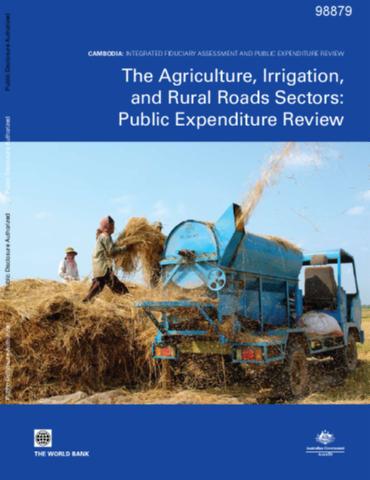The World Bank is a vital source of financial and technical assistance to developing countries around the world. We are not a bank in the ordinary sense but a unique partnership to reduce poverty and support development. The World Bank Group has two ambitious goals: End extreme poverty within a generation and boost shared prosperity.
- To end extreme poverty, the Bank's goal is to decrease the percentage of people living on less than $1.25 a day to no more than 3% by 2030.
- To promote shared prosperity, the goal is to promote income growth of the bottom 40% of the population in each country.
The World Bank Group comprises five institutions managed by their member countries.
The World Bank Group and Land: Working to protect the rights of existing land users and to help secure benefits for smallholder farmers
The World Bank (IBRD and IDA) interacts primarily with governments to increase agricultural productivity, strengthen land tenure policies and improve land governance. More than 90% of the World Bank’s agriculture portfolio focuses on the productivity and access to markets by small holder farmers. Ten percent of our projects focus on the governance of land tenure.
Similarly, investments by the International Finance Corporation (IFC), the World Bank Group’s private sector arm, including those in larger scale enterprises, overwhelmingly support smallholder farmers through improved access to finance, inputs and markets, and as direct suppliers. IFC invests in environmentally and socially sustainable private enterprises in all parts of the value chain (inputs such as irrigation and fertilizers, primary production, processing, transport and storage, traders, and risk management facilities including weather/crop insurance, warehouse financing, etc
For more information, visit the World Bank Group and land and food security (https://www.worldbank.org/en/topic/agriculture/brief/land-and-food-security1
Resources
Displaying 576 - 580 of 4907Mali Financial Sector Assessment Program
The performance of the Malian economy is largely dependent on the performance of the agricultural sector. The overall good growth in the Malian economy over the last several years is attributed to the agricultural GDP growth. Since 1995, the economy grew at about 5 percent per year until 2010, but a global recession, the military coup and terrorist activity caused a noticeable slowdown in GDP to about 1.2 percent in 2011-2012. The economic growth has resumed at a slow pace since 2013 and is currently estimated around 4.5 percent for 2014-2015.
Mali Financial Sector Assessment Program
There has been significant development of Mali’s banking sector in recent years, but it remains shallow, and access to banking services is limited. With the opening of a new bank in 2014, there are now 14 commercial banks operating in Mali. There has been a positive evolution of the banking sector in Mali from 2009-13. There have been a number of changes in recent years in the ownership structure of the banking sector, which is now dominated by foreign shareholders, primarily from Africa.
Romania Toward a Low Carbon and Climate Resilient Economy
This report is about forests that provide a substantial contribution to mitigation in Romania by sequestering carbon, helping to counter carbon emissions from other sectors in the economy. Sustainable forest management is challenged by fragmented ownership and insufficient financial resources in particular. A summary of key existing analytic studies, and the construction of a marginal abatement cost curve for mitigation actions in the forestry sector, was the basis for identifying key adaptation and mitigation measures for Romania’s forests.
Bolivia
This note aims to provide information and analysis as a basis for a better understanding of the challenges and constraints of achieving gender equality in Bolivia, with a special focus on the intersectionality between gender and ethnicity. Combining and analyzing existing evidence and new data, it seeks to document gender-specific disparities in development outcomes, highlight opportunities and constraints to women’s empowerment, and identify areas in which continuing knowledge gaps are particularly important to understand and address gender inequalities.
Cambodia
This report focuses on areas with highest potential efficiency gains to increase the value for money from investments in core public goods and services such as extension, irrigation and rural roads. This is a first attempt to carry out such an analysis in Cambodia, and even in the Greater Mekong sub-region. Based on extensive data gathering and surveys, this chapter analyzes the efficiency and effectiveness of agricultural sector expenditures in Cambodia and assesses various options for increasing the impact of government expenditures on agricultural growth.










